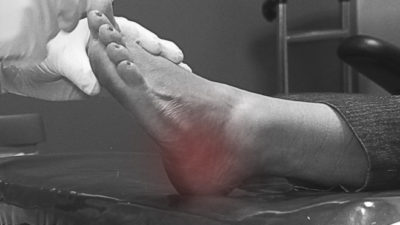Can Alternative Therapy Complement Traditional Sports Injury Treatment?
Corps
Sports are physically strenuous and lead to several musculoskeletal conditions. When someone is performing athletic activities, injuries are inevitable. Therefore, regular visitation with a sports podiatrist is part of their routines. Conventional medicine is not the only method to remediate sprains, strains, and fractures.
Athletes and physically active people who suffer from pain and dysfunction are often recommended to try complementary and alternative therapies. In order to cure sports injuries, you need to be careful when choosing a suitable treatment plan.
Today’s post addresses the usefulness of alternative therapy in treating certain musculoskeletal conditions and sports injuries. The discussion is followed by potential indications of the best treatment options for sports injuries.
What is alternative therapy?
As the name suggests, alternative and complementary treatmentsare not mainstream, but there is a lot of debate about their role in improving the efficacy of sports injuries treatment.

A broad set of healthcare practices are involved in advanced podiatry services. These therapies are not part of the conventional treatment plans but are fully integrated into sports podiatry.
A recent study reaffirmed the growing popularity of alternative therapy. It was stated by the researchers that more than 60% of thepopulation found natural healing methods and relaxation techniques beneficial as part of conventional treatment.
The survey showed that more than 56% of US college athletes used alternative therapy in the past 12 months. The most mainstream alternative treatment is physiotherapy. Exercise and assisted movements are considered the future of alternative medicine.
What is physiotherapy?
When anti-inflammatory medicines or ice packs don’t work the expected way, you can try physical therapy for Achilles Tendon Repair. Indeed, sports injuries are different from regular overuse injuries.
The wear and tear on muscles and joints need specialized treatment to accelerate the recovery process. Physical therapy is considered a useful technique and it is recommended by most podiatrists.
Physical therapy helps in restoring movement through guided exercises and stretches. It also involves massages and heat or cold therapies.
Physical therapy is absolutely safe as long it is performed by a specialist. People suffering from chronic pain find deep tissue massages and stretching complementary to conventional sports injury treatment.
What kinds of sports injuries can be treated with physical therapy?
The most common sports injuries are ligament sprains, muscle strains, fractures, and concussions. Below is a list of common conditions for which your sports podiatrist can recommend physical therapy:
- Muscle strain
Overstretched and torn muscles lead to strain that majorly affects calves, lower back, shoulders, groin, and quadriceps. Physiotherapy can be tried for faster recovery and strengthening.
- Torn ligaments
A direct shot from a basketball or any object can tear the ligaments and might restrict your walking ability. Such injuries can be treated with surgical interventions followed by physiotherapy sessions to accelerate recovery.
- Shin splits
Shin splits are overuse injuries that mostly affect runners. Physical therapyis most useful in such conditions.
- Plantar fasciitis
Excessive strain and stress lead to inflammation and pain in the plantar fascia. Most sports podiatrists recommend physical therapy for this condition.
- Ankle sprains
Twists and rolls often lead to the “classic” ankle sprain condition. Though rest and ice compression are helpful, physiotherapy is still recommended for preventive measures.
- Tennis elbow
It is an overuse injury that can be managed through anti-inflammatory medicines and physical therapy.
- Achilles tendonitis
Inflammation in the calves worsens with physical activity. Therefore, athletes are often recommended to try sports physical therapy.
Based on the severity of the injury, the course of treatment can be decided. Ice packs and a brief period of immobilization are helpful in mild cases. For severe foot and ankle fractures, surgery and physiotherapy are recommended.
Surgery is only recommended in situations of chronic instability. However, there is compelling evidence that physiotherapy can provide remarkable help in the treatment of sports related injuries.
How long does it take to get back in the game?
It is best to take preventive measures and consult with your foot doctor about suitable footwear and the right tapping method. Despite taking precautions, if a condition arises when your sports podiatrist recommends physical therapy, get ready to do stretching and strengthening exercises for weeks or months.
The recovery program is customized for every patient. Therefore, the time required to recover completely differs for everyone.
Is physiotherapy alone enough?
As discussed above, physical therapies have become the mainstream choice in alternative medicine. They complement modern medicine but cannot replace it. Therefore, it is best to get your condition assessed by a board certified podiatrist.
Stress fractures can lead to severe disabilities and dysfunctions, relying only on joint manipulation and stretching might not be efficacious. it is best to consult a sports podiatrist and devise a personalized performance and recovery plan.
Book an appointment at Orange County Foot & Ankle Group. Their board certified sports podiatrists treat a wide variety of foot and ankle problems for athletes. Schedule an appointment to discuss the most suitable course of treatment, which might include modern medicine as well as complementary and alternative therapies.









commentaires